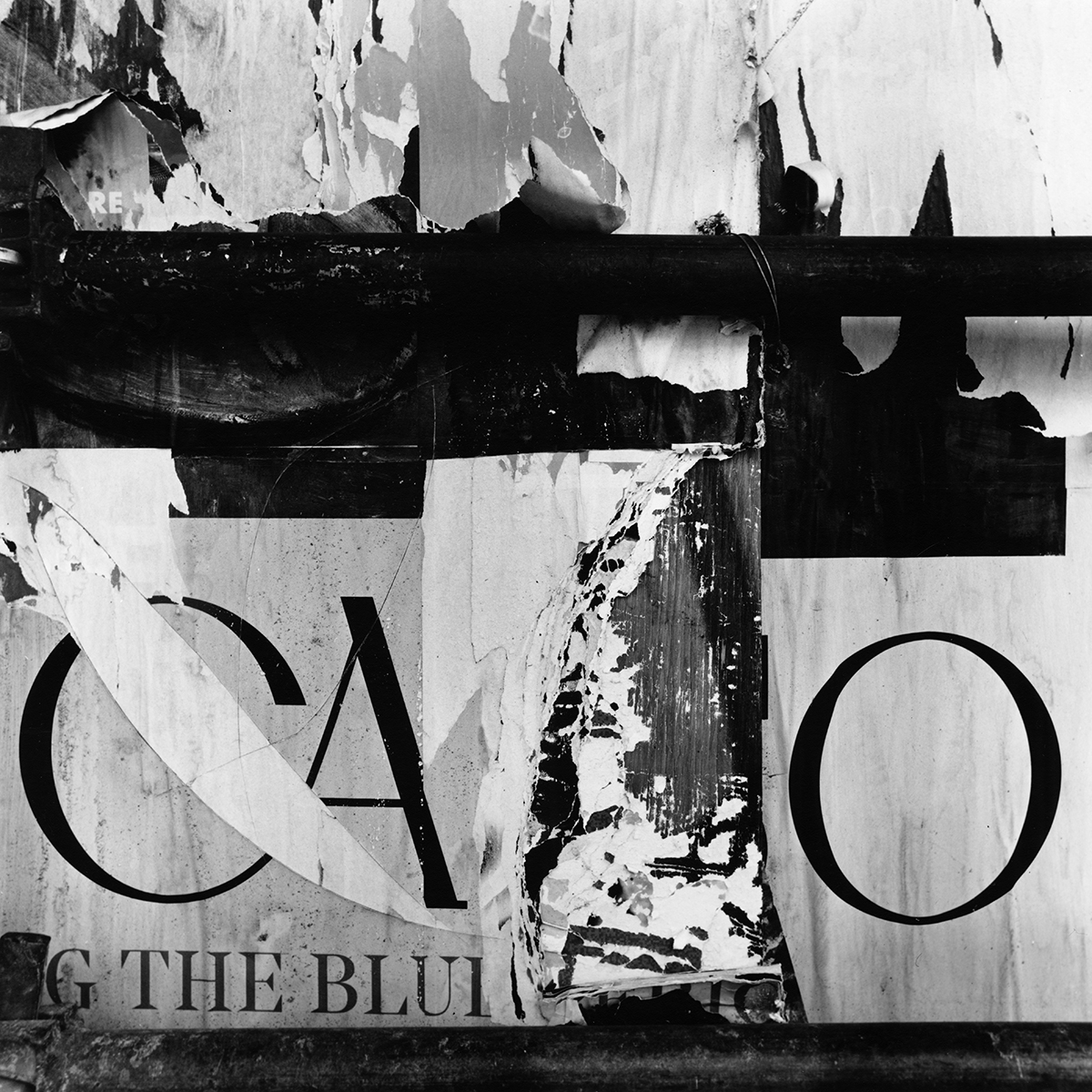For as long as I can remember, I have had difficulties with reading and writing comprehension. When I was younger words were a source of dread, either in spelling or pronunciation, which affected my confidence with public speaking and writing. Yet, I still held a deep interest in words as a visual vocabulary. Within the visual spectrum of various scripts and letters, often viewed as graphics, I could detach from my early obstacles with words. Broken words, silent stutters, are words without structure whose original meanings are lost and now exist as cryptic letter-form artifacts. In this exploration, I have looked at common posters which have had their advertising messages altered through environmental decay. These temporary artifacts, here today and gone tomorrow, are the epitome of impermanence as they are often pasted over, worn, torn and quickly forgotten. I have translated these fading markers of time, that speak to cultural realities as well as a personal sentiment, into permanent archival images represented through photographic fibre-based prints.
Similar to my own exploration of posters, Jacques Villeglé, was a French artist who worked within a similar process. Beginning in the late 1940s, he pioneered a radical technique of lifting posters from the streets to create “found” multimedia artworks and he continues this practice today, even in his late-nineties. He did not substantially alter the resulting artworks, as the posters were weathered or torn by anonymous unintended collaborators. Abstracted and fractured through layering and tearing, this approach was also representative of the cultural realities through the advertising, pop-culture imagery and the political messages of their times. Villeglé was apparently not interested in the poster itself, but more interested in the idea of taking what was on the street and selecting, or framing it. For him, it was the anti-spectacle, anti-capitalism and the remains of civilization which provoked these selections. What Villeglé created is also reflected in my practice of selecting torn posters but, in this case, instead of the actual artifact, it is the photographic print.
While on one level, my interest in selecting these vague, in-decipherable letters from the street is about reclaiming and turning my struggle with words into an artistic observation. There is also a strong representation of my deep feelings toward urban development and change. What I see, and what I have gravitated towards, are these often unattractive blind spots: curbside trash, back alleys, uncertain signs and posters without definitive meanings. Posters, with their strong graphic visuals and text have always been a source of visual delight, yet, the content of these advertisements are abhorrent in their promotion of mass-consumption, the next product, or the perfect lifestyle, which has led and continues to affect environmental consequences. There is a necessity, almost an obsession of mine, to record the messiness around me. Yet, the world is also messy and that is the reality in which we live which is full of contradiction, irony, bitterness and sadness, but also humour and playfulness. I think words are also messy and this series, Silent Stutters, speaks to this.





